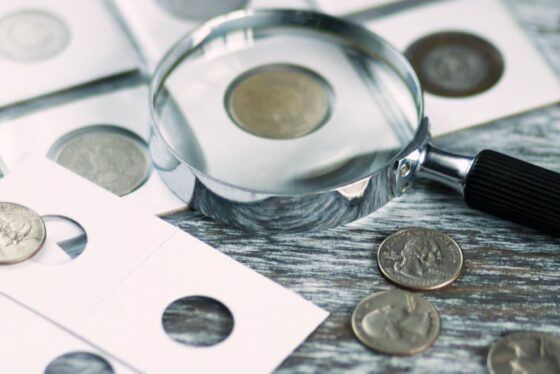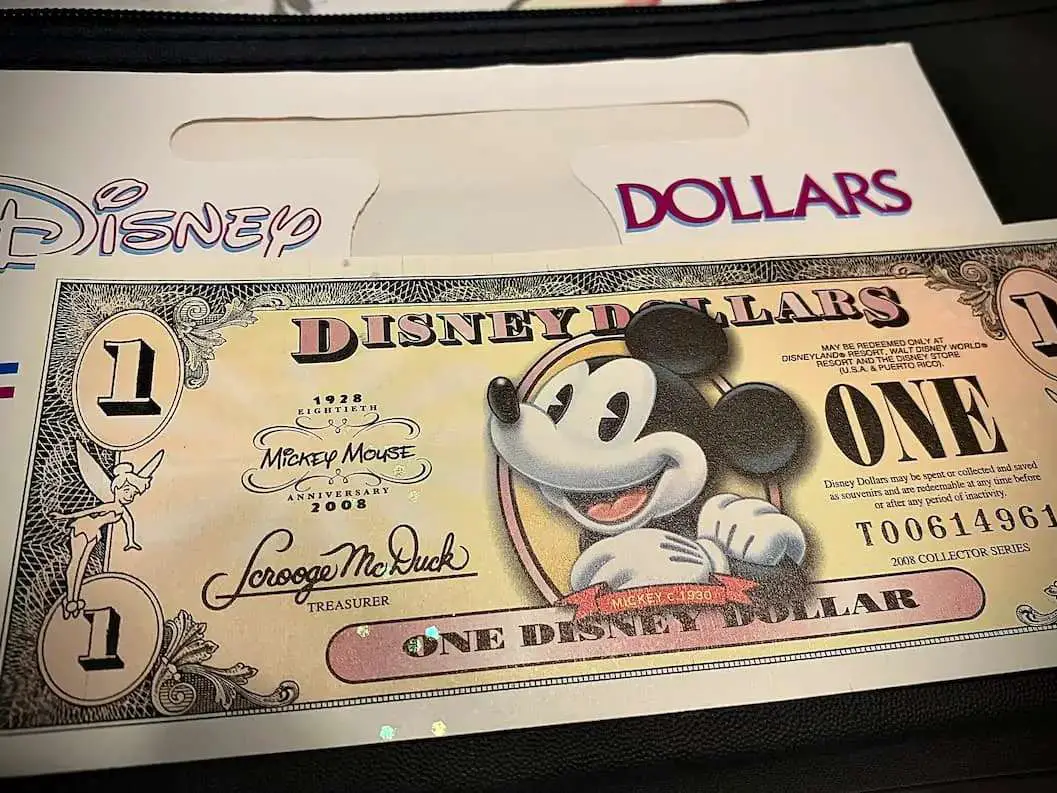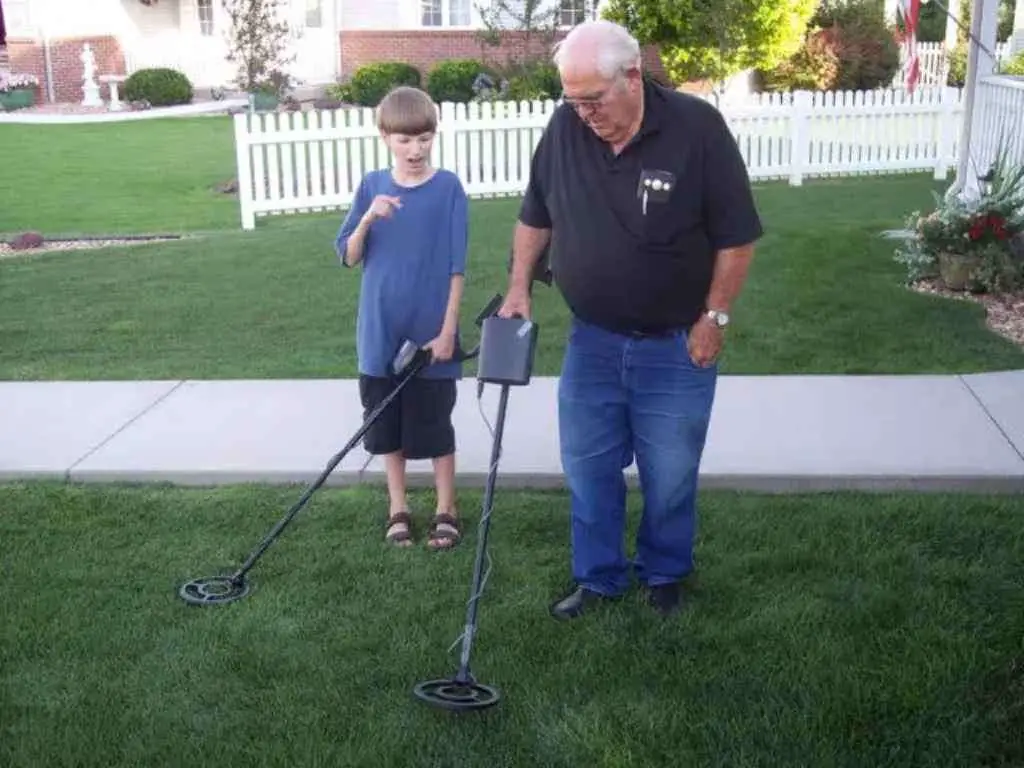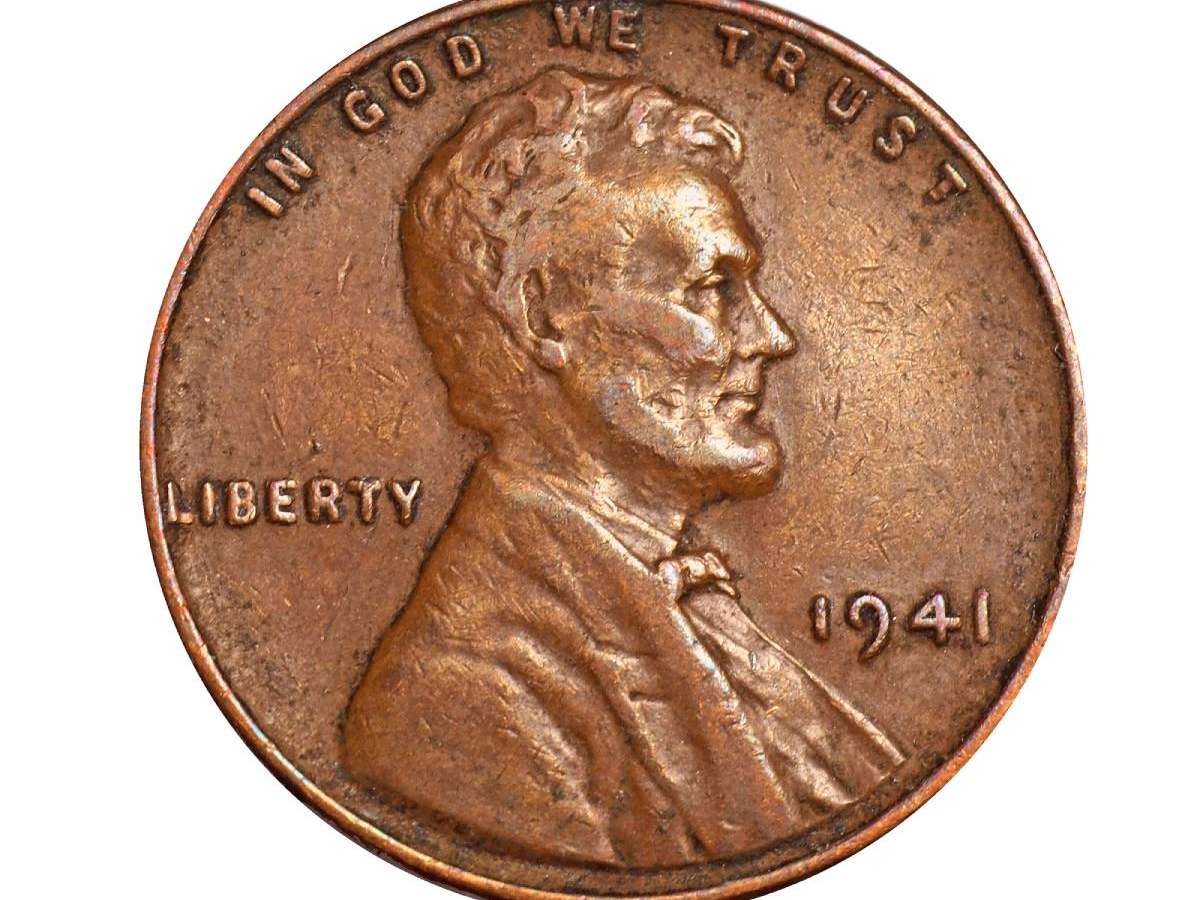You’ve heard of scarce coins and rare coins, but what’s the difference between the two?

What does it mean if a coin is scarce? Does that mean it’s rare, as well?
You hear these terms get tossed around a lot among coin collectors and coin dealers. And the reality is that while both rare coins and scarce coins are harder to find than common coins, there generally is a difference between the two.
But defining that difference is easier said than done.
I’m going to explain some of the things collectors consider when talking about rare coins and scarce coins and what makes these 2 distinctions so important for coin collectors.
Rare vs. Scarce Coins
OK, let’s begin with this — while a rare coin is scarce, a scarce coin isn’t necessarily rare.
Sorry to dive right into the SAT logic riddle. But it’s true…
While there may be fuzzy lines between what constitutes a scarce coin and what makes one rare, the fact that a coin is merely hard to find does not mean that it’s a rare coin.
When Scarce Coins Are Really Just Common
Some coins that you may think are scarce because you don’t stumble upon them all the time in circulation may not be as scarce as they seem.
Consider the example of a 1941 Lincoln penny. Try finding one in your pocket change.
Waiting… Still waiting… I’ll probably be waiting here for awhile.
You see, a 1941 Lincoln wheat cent is pretty difficult to find in day-to-day circulation. Maybe if you started searching through rolls of coins, you’d find one after a few dozen rolls — perhaps longer. But you’ll probably eventually find one if you look long enough.
Now, how rare do you think a 1941 wheat penny is?
After all that searching you’d probably think 1941 pennies are pretty scarce coins.
But would you believe it if I told you that 887,018,000 pennies were made at the Philadelphia Mint in 1941. Read that again. Nearly 1 BILLION! So, maybe you’re thinking, “OK, but of that 887 million, most have probably been lost, destroyed, or worn beyond recognition.”
Actually, yes — most 1941 pennies have been lost to the hands of time. “Then surely there aren’t many 1941 pennies left today, right?”
Well, don’t forget… we’re starting off with a big number to begin with.
According to Professional Coin Grading Service, approximately 89 million of these 1941 pennies are still in existence today. That’s a lot of 1941 pennies!
So where did they all go? Why are they so hard to find?
Coin collectors have been hoarding them over the years. These coins survive by the bulk-load in 5-gallon buckets and even oil drums around the country. Lots of people plucked wheat pennies out of circulation when they were discontinued by the United States Mint at the end of 1958. So, while 1941 wheat pennies may seem pretty scarce in circulation, they’re actually quite common in the hands of coin collectors.
Many coins that non-collectors think are scarce are in fact highly common.
This is certainly the case with Kennedy half dollars, Morgan silver dollars and Peace silver dollars, Eisenhower dollars, Susan B. Anthony dollars, and Bicentennial coins.

These are all coins people ask me about frequently. Folks want to know how rare these coins are — when, in fact, these are extremely common coins for the most part. (Sorry for any bubbles I just burst.)
Examples Of Scarce U.S. Coins
Continuing on with the example of the Lincoln penny (a coin pretty much all of us encounter), let’s turn our attention to some of the early mintmarked pieces.
Think, for a moment, how hard it is to find any pennies from the 1910s with a mintmark. It’s pretty tough to find some of these coins at the coin shop… never mind trying to locate one in circulation! Even some of the collectors who tried filling their penny boards and coin albums back in the mid-20th century couldn’t find these coins then.
So, you open your coin guide book or check out our Lincoln penny articles here at TheFunTimesGuide and start doing some digging on the mintage figures. You want to see how many were made.
Wow… Turns out some of these Denver and San Francisco Lincoln pennies from the 1910s are much scarcer than a 1941 penny!
Remember that 1941 Lincoln wheat cent, with its mintage of 887,018,000 — a coin for which you’d be searching pocket change for a long time before finding an example? Well, check out these mintage figures for selected D- and S-mintmarked Lincoln cents struck from 1910 through 1914:
- 1910-S penny — 6,045,000
- 1911-D penny — 12,672,000
- 1911-S penny — 4,026,000
- 1912-D penny — 10,411,000
- 1912-S penny — 4,431,000
- 1913-D penny — 15,804,000
- 1913-S penny — 6,101,000
- 1914-D penny — 1,193,000
- 1914-S penny — 4,137,000
This isn’t a complete list of the scarcer Lincoln pennies, but it gives you an idea on how much scarcer these particular coins are than the more common pieces — like that 1941 penny.
The coins listed above have an estimated survival rate of perhaps 10%. In other words, most of the pieces above may each have somewhere between 350,000 to 650,000 survivors, depending on the date — some more, some less.
Examples Of Rare U.S. Coins
Notice the 1914-D penny mintage of only 1,193,000? Not only is it the lowest mintage of the group above, it’s one of the scarcest Lincoln cents in the entire series.
In fact, that coin along with the 1909-S VDB Lincoln wheat penny (with a mintage of only 484,000) are considered the key dates of the entire set. They are the among the rarest and most expensive Lincoln pennies. Yet they are necessary for completing a set — and why they are called the “key dates.” (The pieces that are scarce but not necessarily rare are called semi-key dates.)
Now, are the 1909-S VDB and 1914-D pennies rare?
It depends who you’re talking to. In the absolute sense, no — these 2 pennies are not really all that rare. One has a mintage of about half a million, the other more than one million.
Even when looking at survival numbers, they’re each available in fairly large quantities:
- The 1909-S VDB penny has around 50,000 surviving examples.
- The 1914-D penny has approximately 100,000 or more.
Numbers like those are absolutely off-the-charts high when talking about other vintage coins — such as early American Draped Bust or Capped Bust coinage.
But these are Lincoln cents we’re talking about here… Millions of people collect them. Millions. So when you’ve got only 50,000 of something that millions of people want, you’ve got a supply-and-demand imbalance.
And thus, the 1909-S VDB and 1914-D wheat pennies — indeed scarce coins in any setting — become rare coins in the context of the Lincoln penny collector.
So, Are Scarce & Rare Relative Terms?
Yes and no:
- Yes, in that a coin that is hard to find but not necessarily rare can be easily considered “scarce.”
- But a coin that has relatively small mintages and is costly to buy can rightfully be categorized as rare.
What’s that line between scarce and rare?
It depends on the coin series. It’s totally fair to call a 1909-S VDB penny rare. I do all the time. Sure, there may be tens of thousands out there, but there are millions who want one. And with a price of $600 or more even in the lowest grades, a 1909-S VDB penny represents a pretty big purchase for most folks.
On the other hand, that 1913-D penny may be pretty tough to find. But it’s not going to necessarily break the bank to own one — like that 1909-S VDB penny. Spend $5 or $10 and you can have an example in worn but decent condition. That 1913-D Lincoln penny is no 1941 wheat cent when it comes to availability. It’ll be pretty tough to find a 1913-D in nice condition any day of the week. It’s a solidly scarce coin, especially in desirable condition.
Is Rarity All About Price?
No. Greater rarity often equates to higher price but does not necessarily correspond directly with it.
Consider the 1841-O Liberty Seated half dime. It’s much rarer than its mintage of 815,000 may suggest. Professional Coin Grading Service suggests just 200 exist across all grades — again, only 200. Yet, an example can be obtained for about $100 in a grade of Fine-12. In other words, a coin that is some 250 times rarer than the 1909-S VDB penny can be had for as little as one-sixth the price.
Why? Differences in demand. While millions clamor to buy a 1909-S VDB penny, there simply aren’t that many people who collect Liberty Seated half dimes — especially by date.
Want a representative example of a nice Liberty Seated half dime for your collection? You probably won’t go for the one that costs $100 in circulated grade (like the 1841-O). You’ll likely instead buy a much more common 1853 or 1857, which can be had in that same grade of Fine-12 for maybe $25.
The Universal Coin Rarity Scale
It’s hopefully pretty clear by now that a “scarce” coin isn’t necessarily as hard to find as one that’s all-out “rare.”
The terms may often be used in somewhat synonymous ways — but in the purist sense, a coin described merely as scarce won’t be as challenging to find as one that’s rare.
But how rare is rare?

Numismatists have attempted to define this for ages. And in the early 1990s, the great numismatic expert and author Q. Dave Bowers devised the Universal Rarity Scale (URS). The URS references a coin’s rarity based on the number of survivors, NOT a coin’s mintage.
Here’s a breakdown of Bowers’ coin rarity scale, from URS 1 to URS 20…
Universal Rarity Scale
- URS-1 — 1 known example, totally unique
- URS-2 — 2 known examples
- URS-3 — 3 to 4 known
- URS-4 — 5 to 8 known
- URS-5 — 9 to 16 known
- URS-6 — 17 to 32 known
- URS-7 — 33 to 64 known
- URS-8 — 65 to 125 known
- URS-9 — 125 to 250 known
- URS-10 — 251 to 500 known
- URS-11 — 501 to 1,000 known
- URS-12 — 1,001 to 2,000 known
- URS-13 — 2,001 to 4,000 known
- URS-14 — 4,001 to 8,000 known
- URS-15 — 8,001 to 16,000 known
- URS-16 — 16,001 to 32,000 known
- URS-17 — 32,001 to 65,000 known
- URS-18 — 65,001 to 125,000 known
- URS-19 — 125,001 to 250,000 known
- URS-20 — 250,001 to 500,000 known
Other Coin Rarity Scales
The Universal Rarity Scale listed above is one of the more commonly used means of identifying how rare a coin is relative to another. But it’s not the only coin rarity scale. There are several others in use.
One invented by coin expert Walter Breen looks something like this…
Walter Breen Coin Rarity Scale
- R1 — 1,251 or more known, “common”
- R2 — 501-1,250 known, “uncommon”
- R3 — 201 to 500 known, “scarce”
- R4 — 76 to 200 known, “very scarce”
- R5 — 31 to 75 known, “rare”
- R6 — 13 to 30 known, “very rare”
- R7 — 4 to 12 known, “extremely rare”
- R8 — 1 to 3 known, “unique or nearly so”
Another interesting coin rarity scale was published by Morgan and Peace silver dollar experts Leroy Van Allen and A. George Mallis. You’ll see that while it officially applies to Morgan and Peace dollars, its relativity of rareness and scarceness within each of tier of population numbers may also be appropriate for determining the relative rarity or scarceness of other widely collected coins, such as Lincoln cents…
Van Allen & Mallis Morgan & Peace Dollar Rarity Scale
- R1 — Common (tens of millions of survivors)
- R2 — Not So Common (millions known)
- R3 — Scarce (hundreds of thousands)
- R4 — Very Scarce (tens of thousands)
- R5 — Rare (several thousands)
- R6 — Very Rare (several hundred)
- R7 — Extremely Rare (few tens)
- R8 — Unique or Nearly Unique (several)
So, what do you make of all of this?
As you see, each scale has its own parameters of defining rare versus scarce — but at the end of the day, a “rare” coin is always rarer than a “scarce” coin.
In my many years in the hobby, I’ve realized at least this much: rarity, sometimes, is in the eye of the beholder.
I may get a collector of Draped Bust dollars (which have relatively small numbers of survivors) to shake their head in disagreement when I refer to a 1909-S VDB penny as rare. But that 1909-S VDB penny — often considered the Holy Grail of rarities for the Lincoln cent diehard enthusiast — represents the elusive stuff of dreams for so many collectors.
Again, a rare coin represents the ultimate in challenge, whereas a scarce coin is something more difficult to obtain than a common coin. But it may serve collectors best (and help keep bitter numismatic debates to a minimum) to compare rarity of coins only within a given series of coins.
I’ll give you this… You can claim all you want that a 1933 Saint-Gaudens double eagle — a coin with only one legal specimen in private hands — is one of the world’s rarest coins. That’s totally true, no matter what coin series to which your comparing the rarity of this essentially unique treasure.
But when talking about your garden-variety rare U.S. coins — your 1909-S VDB pennies and 1893-S Morgan dollars — it’s perhaps most fruitful to compare apples to apples. Go to any random coin show and I can almost certainly assure you that you’re going to find a 1909-S VDB penny or 1893-S Morgan dollar in coin dealer cases long before you stumble upon an 1841-O Liberty Seated half dime for sale.
Looks like the great scientist Albert Einstein was right about numismatics, too… It’s all about relativity!

I’m the Coin Editor here at TheFunTimesGuide. My love for coins began when I was 11 years old. I primarily collect and study U.S. coins produced during the 20th century.
I’m a member of the American Numismatic Association (ANA) and the Numismatic Literary Guild (NLG) and have won multiple awards from the NLG for my work as a coin journalist. I’m also the editor at the Florida United Numismatists Club (FUN Topics magazine), and author of Images of America: The United States Mint in Philadelphia (a book that explores the colorful history of the Philadelphia Mint). I’ve contributed hundreds of articles for various coin publications including COINage, The Numismatist, Numismatic News, Coin Dealer Newsletter, Coin Values, and CoinWeek.
I’ve authored nearly 1,000 articles here at The Fun Times Guide to Coins (many of them with over 50K shares), and I welcome your coin questions in the comments below!





